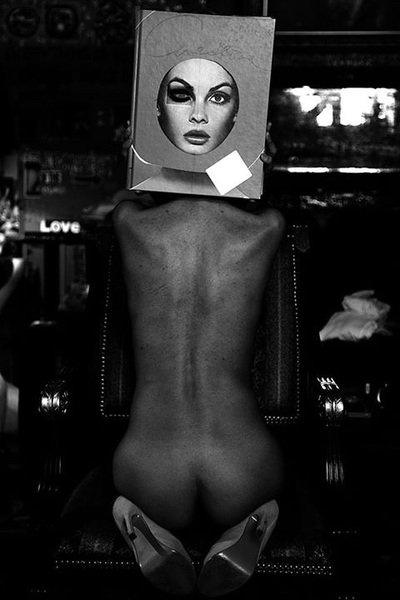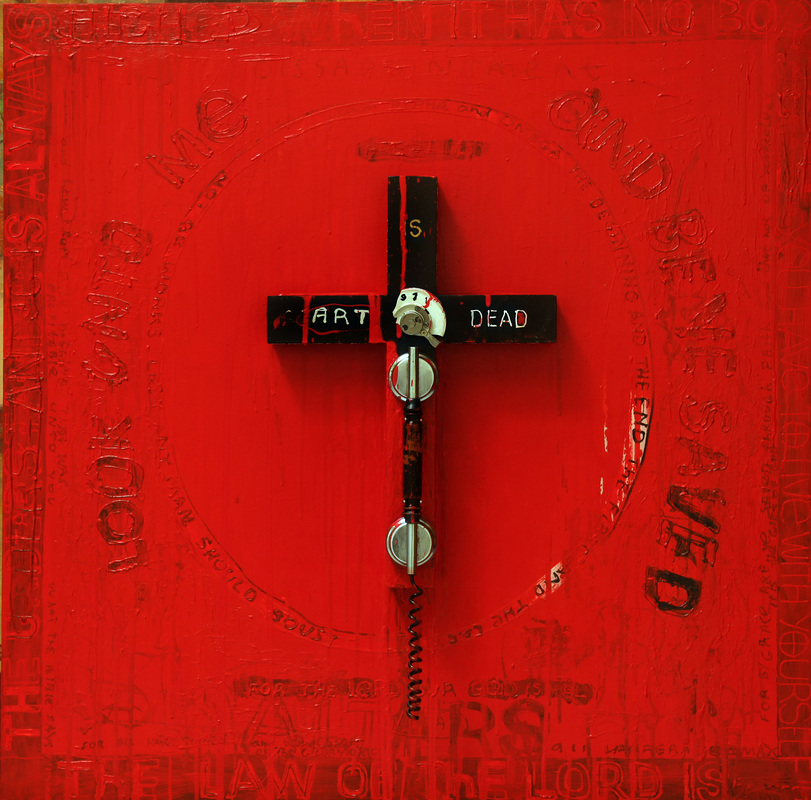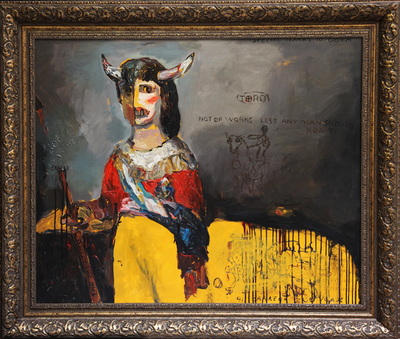 Maxim Bashev
Maxim Bashev Maxim Bashev was born in Moscow and graduated from Moscow Art School N.1. He has been exhibiting internationally for the past 30 years. The artist's work shows the influence of a disparate group of artists from old masters like Da Vinci and Velasquez to modern masters like Picasso. Throw in a healthy dose of even more recent artists like Keith Haring and Jean-Michel Basquiat and the result is art with a unique style.
Bashev is both a painter, mixed media artist and photographer.
His grandmother was the first person to see his talent and put him on the path to becoming an artist.
"Surprisingly, she didn’t have any education in this area. But there was her intuition and love of art." he says.
Art was something within him. Bashev feels that he was hardwired to be an artist.
"I had no chance; I was doomed to become an artist. No other subjects interested me. But as to Art, I felt fully involved. I didn’t enter any art university and, thank God, {this was} for the better," says Bashev. "They didn't spoil my personal style which was just being formed at the beginning of 80s. Then it was Luís Ortega. He opened a lot of doors in the art world."
"To me, he is Leonardo of the 20th Century: a scientist, a philosopher, a graphic artist, a painter." says Bashev.
From Ortega, Bashev learned about paints and other materials. He learned the differences between Soviet and foreign paint and had the opportunity to use the best foreign paints. He was able to see the difference between these and the home-grown paint. But he also learned that materials are not the most important part of any work.
"Once I dropped in for some advice and saw a remarkably beautiful picture on the wall. Apparently, he had made it a while ago, I hadn’t seen it before. After a small discussion I asked him a simple question that worried me: 'Luís, tell me please, what paints did you use executing this masterpiece?' And he answered: 'Soviet'," says Bashev. "Then I understood a lot of things. I use any material. I prefer, certainly, the best quality. But if there is nothing at hand but a bad canvas, a curved stretcher and crappy paints, but I’ve got the mood – it won't stop me."
"The main problem of ours is the absence of the market in a controversy to yours or, for example, Germany’s. There are only two cities in such a huge country which try to advance the modern art and in general the Art: Leningrad and Moscow." he says.
There are a limited number of galleries and these cannot meet the needs of all the Russian artists looking for exposure, especially exposure in the international arena. Imagine if there were only major U.S. galleries in New York and Los Angeles.
"But those galleries which stay afloat despite difficulties in the political situation try to participate actively in the international forums, advancing the artists." says Bashev.
"I plan the artwork in general. Different situations can arise within the process. There is, certainly, an element of a so-called controlled haphazard way. But, in general, I try to ponder on each step," he says. "Intuition is like shadow. It is always close. So it is difficult to say where I made a decision and where it was my intuition. As in life: it seems that it is yours but it is God's."
He says he grew up seeing the old masters and feels it appropriate to look back to them, as well as to the future of art.
"It is natural that, despite all modern trends, styles and directions, love of the Masters didn't get anywhere.I wanted to touch greatness of geniuses of the past." says Bashev.
One of his favorite works is The lady with an Ermine (Dama con l'ermellino), by Da Vinci, is one of his favorite works and was the topic of nine of his paintings.
"I saw it the first time in Krakow in 1975 and made its copy from a magazine’s reproduction. A lot of time passed since then. In 2009 I returned to it again and several times after. The Lady was almost identical everywhere, but the Ermine was always diverse," he says. "It was young, healthy and angry, it was old, harmful and tricky, it was on the other side of the good and evil, but always it was devoted and true for Cecilia Gallerani – it's beloved (it is no secret that it was the prototype for the Duke of Milan)."
He then made the Last Supper piece.
"I placed artists round the table those, who affected me and thanks to whom I became what I am now, instead of apostles and the Christ." he says.
When it comes to what he wants his audience to get out of his work--his aim is straight-forward; he wants them to think. He believes one of the objectives is to force a viewer to think and immerse themselves in different features of a piece of art. He also says that what he, as the artist meant in his work is less important than what the audience thinks about the work.
"My reasoning concerning pictures is less important, than audience attempts at analysis. It is their idea, their work, their way. Once I had an occasion when one of my buyers told me about my work much more and more interestingly (more deeply), than I could..."
He says that, in a way, his pieces stand by themselves and, after creation do not need his help (they do not need him to explain them). This is almost a poet's view of fine art; you decide what the pieces mean within the structure the artist provides. Bashev is quick to add that a critic viewing an artist's work is altogether different.
"Sometimes the history of art depends on one successfully or unsuccessfully written article." says Bashev.
Be sure to keep an eye out for his work at Art Fairs around the world.
See more by Bashev at the 11.12 Gallery (Moscow) website.












 RSS Feed
RSS Feed